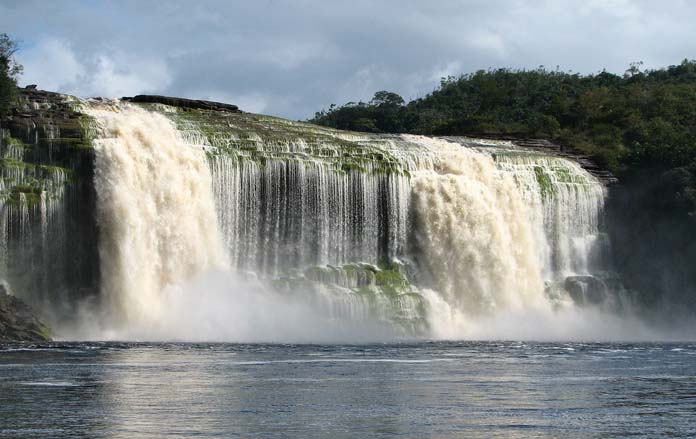Salto Hacha is by no means the most famous waterfall in Venezuela. Generally overshadowed by nearby Angel Falls, the world’s largest waterfall, Salto Hacha often first appears to visitors as a side stop on an itinerary headed toward the big show. Despite its more humble reputation, Salto Hacha is a unique and unforgettable location with much to offer those adventurous enough to seek it and making the falls one of the more popular Waterfalls of South America.
Located in the world famous Canaima National Park Lagoon, inside of the UNESCO World Heritage Site Canaima National Park, Salto Hacha is part of a large natural reserve with unique flora, animal life and one-of-a-kind rock formations. While visiting Salto Hacha, visitors may be lucky enough to spot monkeys, giant anteaters, three-toed sloths, jagurs and poison arrow frogs in addition to hundreds of species of orchids and other exotic fauna.
Tourists visiting Salto Hacha are allowed to climb behind the waterfall’s curtain and get a truly insider view of one of the world’s most incredible locations. The trails that go behind the falls are slippery and it is recommended that visitors bring shoes appropriate for climbing on wet terrain.
Salto Hacha also boasts a nearby beach that tourists can visit after their climb. The over-presence of quartz in the Canaima National Park Lagoon gives the water and sand a unique ambiance. Although the water remains clear, it takes on a unique rusty or tea-like appearance, while the sand appears red and even pink in spots. The Lagoon is known for gentle waters and tourists can swim peacefully surrounded by breathtaking views of some of the world’s most famous waterfalls.
Salto Hacha should not be approached independently. With remote, tough terrain and strict government regulation to protect the fragile eco system, travelers will need to acquire a guide. It is not difficult to find tour companies operating out of Caracas or Ciudad Bolívar with prices varying throughout the seasons. Prices from Ciudad Bolívar tend to be more competitive.
All tourists flying to Canaima National Park must be able to prove that they have received a recent Yellow Fever vaccination. Those who cannot provide proof will be required to receive a vaccination at the airport. The climate in Canaima National Park is tropical and usually rainy with a dry season lasting from December to April. Toward the end of the dry season, Salto Hacha and the other waterfalls may slow to just a trickle.





